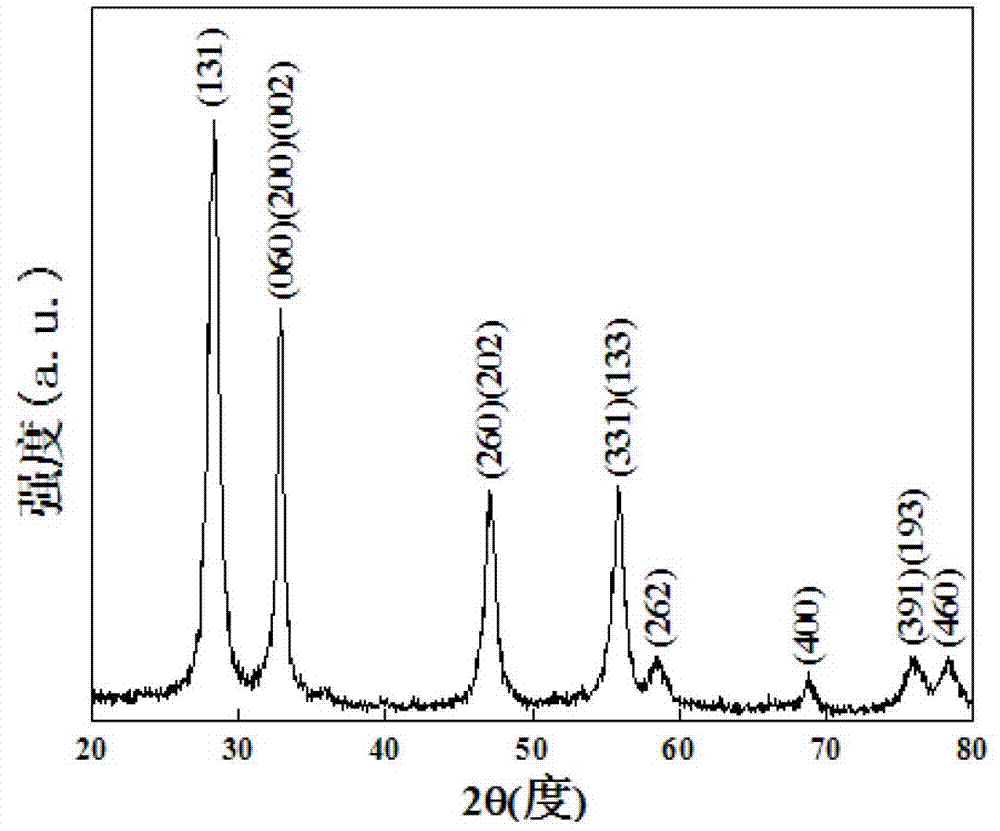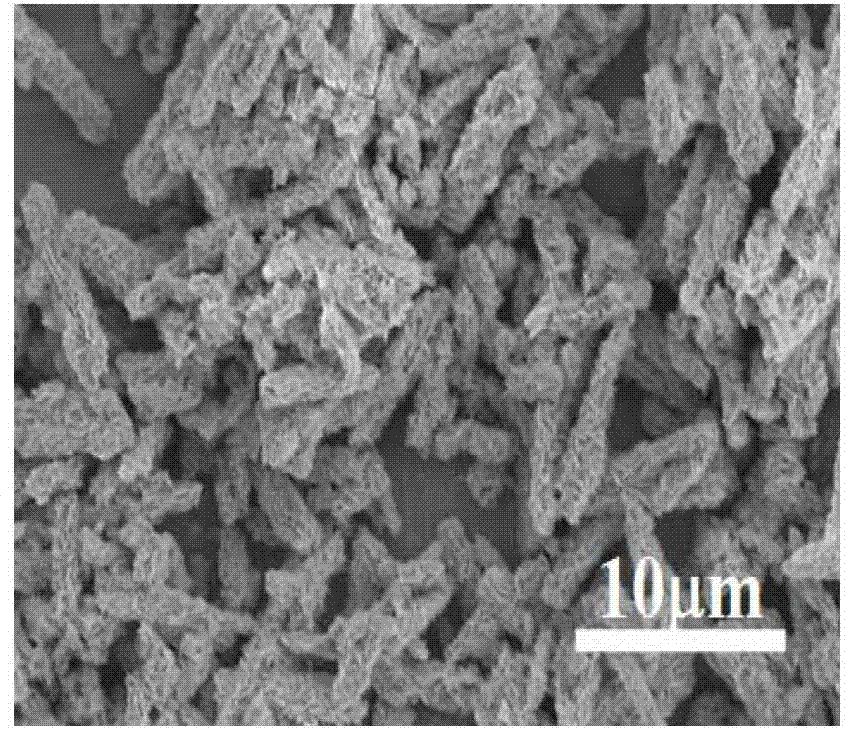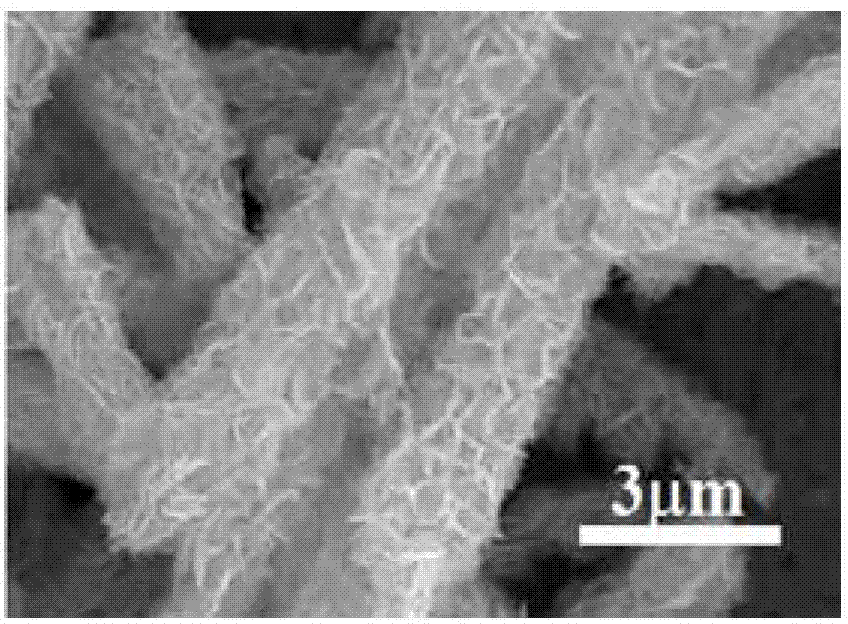Method for preparing one-dimensional hollow superstructure photocatalytic material of Bi system composite oxide
A technology for composite oxides and photocatalytic materials, which is applied in the field of preparation of Bi-based composite oxide photocatalytic materials, can solve problems such as difficult recycling, low catalytic activity driven by sunlight, and single structure, and achieves a simple and easy preparation method , Excellent sunlight-driven photocatalytic activity and efficiency improvement effect
- Summary
- Abstract
- Description
- Claims
- Application Information
AI Technical Summary
Problems solved by technology
Method used
Image
Examples
specific Embodiment approach 1
[0019] Specific embodiment one: In this embodiment, a method for preparing a Bi-based composite oxide one-dimensional hollow superstructure photocatalytic material is realized according to the following steps:
[0020] First, the one-dimensional Bi 2 o 3 The nanorods are dispersed in absolute ethanol, and then the aqueous solution of acetic acid is added dropwise until the pH value of the system is 3-6 to obtain a suspension;
[0021] 2. Dissolve the oxysalt in deionized water to obtain an aqueous solution of the oxysalt. Under the condition of magnetic stirring at 200-700 r / min, add the aqueous solution of the oxysalt to the suspension in step 1, and then transfer Put it in a stainless steel reaction kettle with a polytetrafluoroethylene liner, react at a temperature of 100-180°C for 6-14 hours, cool naturally to room temperature, wash with deionized water and absolute ethanol three times after centrifugation, and then put In an oven, dry at a temperature of 60°C for 6 hour...
specific Embodiment approach 2
[0025] Specific embodiment 2: The difference between this embodiment and specific embodiment 1 is that in step 1, acetic acid aqueous solution is added dropwise until the pH value of the system is 4-5.5. Other steps and parameters are the same as those in Embodiment 1.
specific Embodiment approach 3
[0026] Specific embodiment 3: The difference between this embodiment and specific embodiment 1 or 2 is that step 2 is reacted at a temperature of 120-160° C. for 8-11 hours. Other steps and parameters are the same as those in Embodiment 1 or Embodiment 2.
PUM
 Login to View More
Login to View More Abstract
Description
Claims
Application Information
 Login to View More
Login to View More - R&D Engineer
- R&D Manager
- IP Professional
- Industry Leading Data Capabilities
- Powerful AI technology
- Patent DNA Extraction
Browse by: Latest US Patents, China's latest patents, Technical Efficacy Thesaurus, Application Domain, Technology Topic, Popular Technical Reports.
© 2024 PatSnap. All rights reserved.Legal|Privacy policy|Modern Slavery Act Transparency Statement|Sitemap|About US| Contact US: help@patsnap.com










